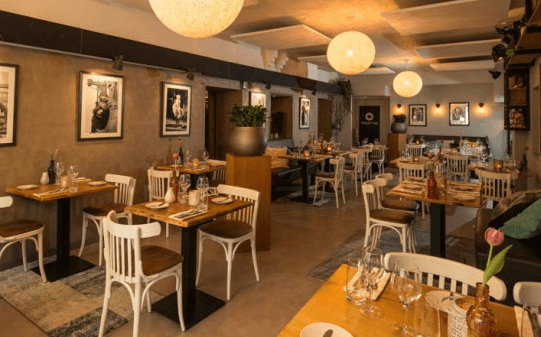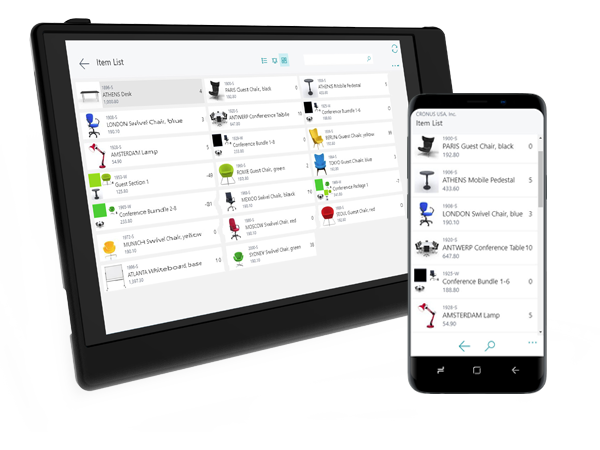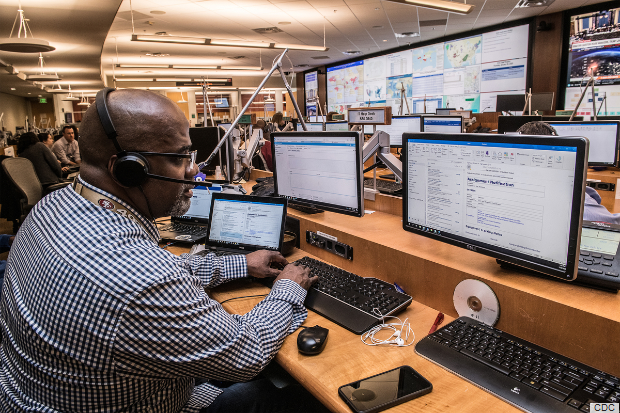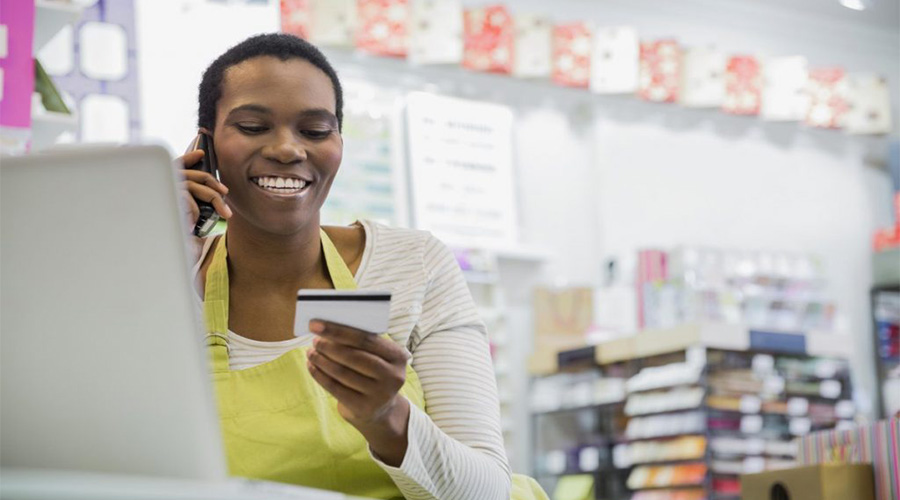
Table dividers and plexiglass screens, private rooms, temperature checks, mandatory masks and gloves, sanitizer stations – these were just some of the responses to a Tweet posted by Dave Chang about how the restaurant industry is responding to coronavirus. The US restauranteur and founder of the Momofuku restaurant group wanted to know what the dining experience looks like in restaurants following the easing of lockdown restrictions in Taipei, Hong Kong, Korea, and China and how restaurants are dealing with the new protocols.
While this picture of strict new social distancing and hygiene measures may look out of place in an industry that by its very nature is sociable, the good news is that, slowly but surely, restaurants are back in business and finding new ways to adapt. And, critically, consumers are returning.
In many ways, the reopening of restaurants is a small step towards a return to normal life, but consumers are understandably cautious and have to grow accustomed to a new dining experience that is quite different from what they’ve been used to. It’s putting added pressure on restaurants to figure out how to protect staff and customers without totally jeopardizing the welcoming environment that attracts diners in the first place. No easy feat – but it can be done.
With this in mind, here are some simple steps to implement in your restaurant to make customers more inclined to step foot through your doors and feel more at ease when they’re in your premises:
1. Adapt your business for takeaway and delivery
Off-premises dining is perhaps the most obvious step to take. During heightened lockdown restrictions, it’s thanks to takeaway and delivery that many restaurants managed to stay in business. Some restaurants have introduced collection points and new takeaway windows, while others have opted for entirely contactless delivery services. It’s generally been easier for restaurants with modern POS systems in place to get up and running faster with these new services, even when they weren’t doing them already. That’s because many of these systems have the functionality for website orders, and integrate seamlessly with the likes of Deliveroo and Uber Eats.
While this isn’t about getting customers into your restaurant and dining, it’s a great way to keep the cash flow going and potentially reach a new customer base that will hopefully continue to support your business long after the lockdown restrictions and the fear of contagion are behind us.
2. Have effective and visible hygiene routines
Not cleaning thoroughly is one of the most common reasons why food businesses are prosecuted. Add a pandemic into the mix, and hygiene is now priority number one, two, and three.
Most businesses already had strict regulations that included reminding workers to wash their hands frequently, sanitizing high-touch areas, and sending home workers as soon as they look or feel ill. No matter how rigorous your cleaning schedule in place was, now is the time to communicate to your customers exactly what your cleaning policies are. If you want diners to come back, you need to reassure them that you’re doing what you can to help keep them and staff safe. Some restaurants are stepping up their efforts by disinfecting cutlery and tableware in front of customers before their meals are served up, and carrying out regular deep cleans. Businesses like McDonald’s are also introducing signage to indicate which tables have just been sanitized and are ready for use.
3. Proactively protect staff and customers
Daily wellness and temperature checks are now the new norms at many restaurants to help ensure staff is healthy and fit to work. Yum!, the restaurant chain that owns brands including KFC, Pizza Hut, Taco Bell and The Habit Burger Grill, is making thermometers and non-surgical grade face masks or coverings widely available to its workers. At the same time, they also ensure that single-use, disposable gloves are worn by all guest-facing restaurant team members, not just the employees handling and preparing food. Some restaurants that have the necessary space are also installing transparent counter shields to add a physical barrier between team members and customers.
Experts also highlight the importance of changing restaurant culture to ensure workers aren’t working when they’re ill. Even without the threat of a pandemic, it’s important for restaurant owners and operators to set the right example from the top down and make it clear that staff shouldn’t be coming to work when they’re sick. To help, businesses are increasingly offering paid sick leave, if they didn’t already, and managers are being asked to model the right behavior.
To help keep customers safe both when collecting food and when dining in, restaurants are making it easier than ever to ensure cleanliness by setting up sanitization stations with antibacterial gel. Some have also made it mandatory for customers to wear face coverings directly before and after eating – arguably, this kind of demand may go down more easily in some cultures than in others.
4. Help enforce social distancing
Booths, screens, table dividers, taped off tables and seats, private rooms and clear floor markings are now becoming the new norm as restaurants step up their efforts to ensure customers stay the recommended distance of six feet or two meters away from each other.
Some businesses have come up with amusing and creative solutions, such as filling vacant tables with mannequins, giant teddy bears or cardboard cutouts, or asking customers to wear crazy hats to keep them apart. Although one has to appreciate the attempts to lighten up the atmosphere, social distancing is not a gimmick, and it’s important to actively step up to make your environment safer. While plexiglass dividers and make-shift booths may potentially affect restaurant ambiance and aesthetics, customers are quickly getting used to these new safety precautions and accepting that they’re here to stay, at least for the short to medium term.
5. Encourage contactless ordering and payments
Reforms in the payments industry mean restaurants and fast-food chains are well set for supporting contactless payments. Widespread adoption of chip and PIN and contactless payment terminals in the industry has made it easier for restaurants to handle the transition to cash-free payments in the name of convenience, speed, and increased safety. In McDonald’s, for example, contactless payments are in place at all restaurants, including protective panels on counters and in drive-thru facilities. Kiosk use remains limited, with screens, table tents and keypads cleaned after each use.
Restaurants gearing up for reopening are finding this is an ideal time to upgrade their POS and explore modern payment collection and ordering functionality, including contactless payments, digital wallets, and invisible payments. Those leading the way choose a full retail management and payment platform that puts them in the best possible position to adapt to ongoing market developments.
Brighter times are ahead
Restaurants and the wider hospitality industry have deep concerns about the long-term impact of coronavirus on their businesses, and uncertain times inevitably lie ahead. But the good news is that in places where lockdown restrictions are lifting, restaurants are, once again, buzzing with diners. In Hong Kong, for example, restaurants were quick to introduce new safety measures and are now allowed to operate at full capacity. There has been no record of clusters of coronavirus cases related to restaurants there since late March.
It’s possible for every eatery, regardless of size, to implement safety measures that help to keep the coronavirus under control. Together, we can share and learn best practices from each other to help encourage customers to return, while building a safer, more resilient future.
We can help you bring your ideas to life with reliable, scalable technology that will grow with your business needs. Get in touch with the Tech team on +2348139319159 or +2348177772980. You can also email the team on [email protected] if you want to see our software solutions in action and how it can help your business
Our fees have been waived including training your entire team. We understand the importance of ICT infrastructure in helping our clients meet their business goals and so we continually evolve and adapt our skills as environments become dynamic to allow us effectively and proactively manage our clients’ information and communications system.
Remember, it’s all starts here at http://growthcapital.ng/
Click to chat with an expert today: https://wa.me/2348139319159
At Growth Capital Group, we grow with you!
You can walk into any of our experience centers to get firsthand experience on all our platforms.
Island Location: 7b Dr. S Ezekuse Close, Lekki Phase 1, Lagos
Mainland Location: WorkStation Office, Maryland Mall, Anthony Lagos.
Mainland Location: 12, Rev Ogunbiyi, Ikeja GRA Lagos.
Abuja Location: 167, Adetokunbo Ademola Crescent, Wuse Abuja.
Recent Posts
- How Countries are Preparing, Coping, and Planning for Recovery: How EduBase is helping Schools in this Pandemic Era.
- Why it Makes Sense to Move your Retail Management Software to the Cloud
- How EduPoint; One of Growth Capital’s Port-folio Companies is Improving the Way Students are Learning in this Pandemic
- 4 Omni-Channel Failures That Could Easily Have Been Avoided With the Right Management System
- TeleHealth in COVID-19: How e-Doctor is helping Hospitals.







Recent Comments